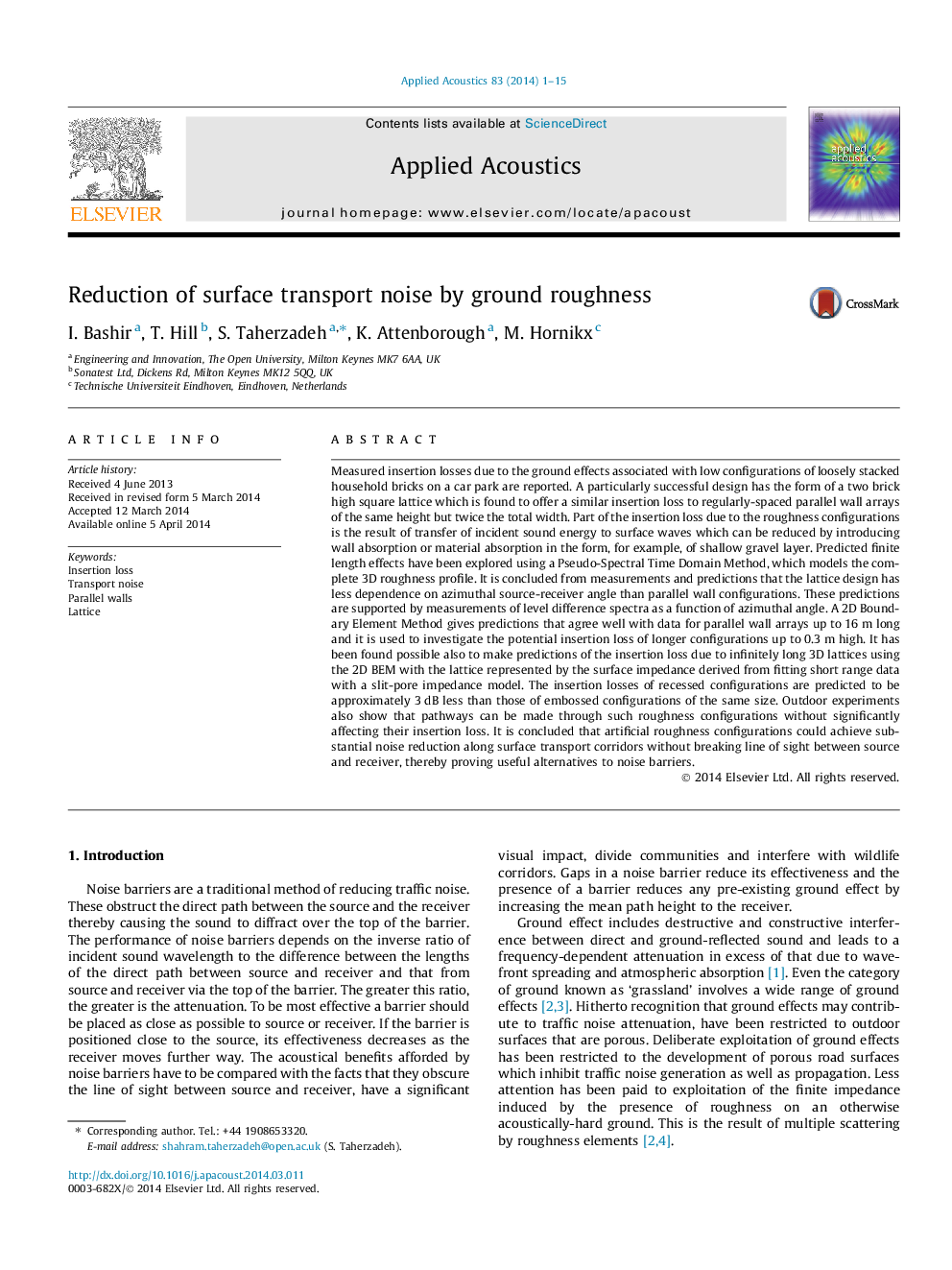| کد مقاله | کد نشریه | سال انتشار | مقاله انگلیسی | نسخه تمام متن |
|---|---|---|---|---|
| 754444 | 1462425 | 2014 | 15 صفحه PDF | دانلود رایگان |
Measured insertion losses due to the ground effects associated with low configurations of loosely stacked household bricks on a car park are reported. A particularly successful design has the form of a two brick high square lattice which is found to offer a similar insertion loss to regularly-spaced parallel wall arrays of the same height but twice the total width. Part of the insertion loss due to the roughness configurations is the result of transfer of incident sound energy to surface waves which can be reduced by introducing wall absorption or material absorption in the form, for example, of shallow gravel layer. Predicted finite length effects have been explored using a Pseudo-Spectral Time Domain Method, which models the complete 3D roughness profile. It is concluded from measurements and predictions that the lattice design has less dependence on azimuthal source-receiver angle than parallel wall configurations. These predictions are supported by measurements of level difference spectra as a function of azimuthal angle. A 2D Boundary Element Method gives predictions that agree well with data for parallel wall arrays up to 16 m long and it is used to investigate the potential insertion loss of longer configurations up to 0.3 m high. It has been found possible also to make predictions of the insertion loss due to infinitely long 3D lattices using the 2D BEM with the lattice represented by the surface impedance derived from fitting short range data with a slit-pore impedance model. The insertion losses of recessed configurations are predicted to be approximately 3 dB less than those of embossed configurations of the same size. Outdoor experiments also show that pathways can be made through such roughness configurations without significantly affecting their insertion loss. It is concluded that artificial roughness configurations could achieve substantial noise reduction along surface transport corridors without breaking line of sight between source and receiver, thereby proving useful alternatives to noise barriers.
Journal: Applied Acoustics - Volume 83, September 2014, Pages 1–15
